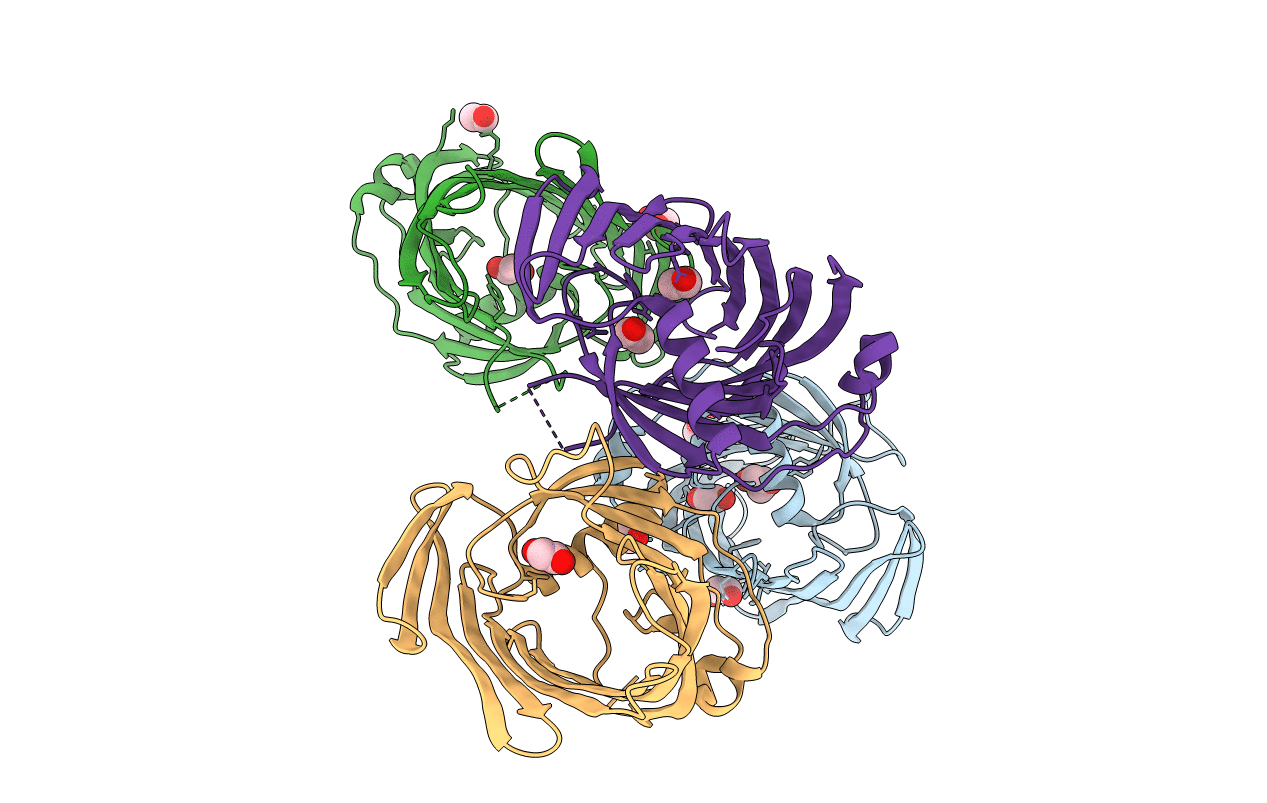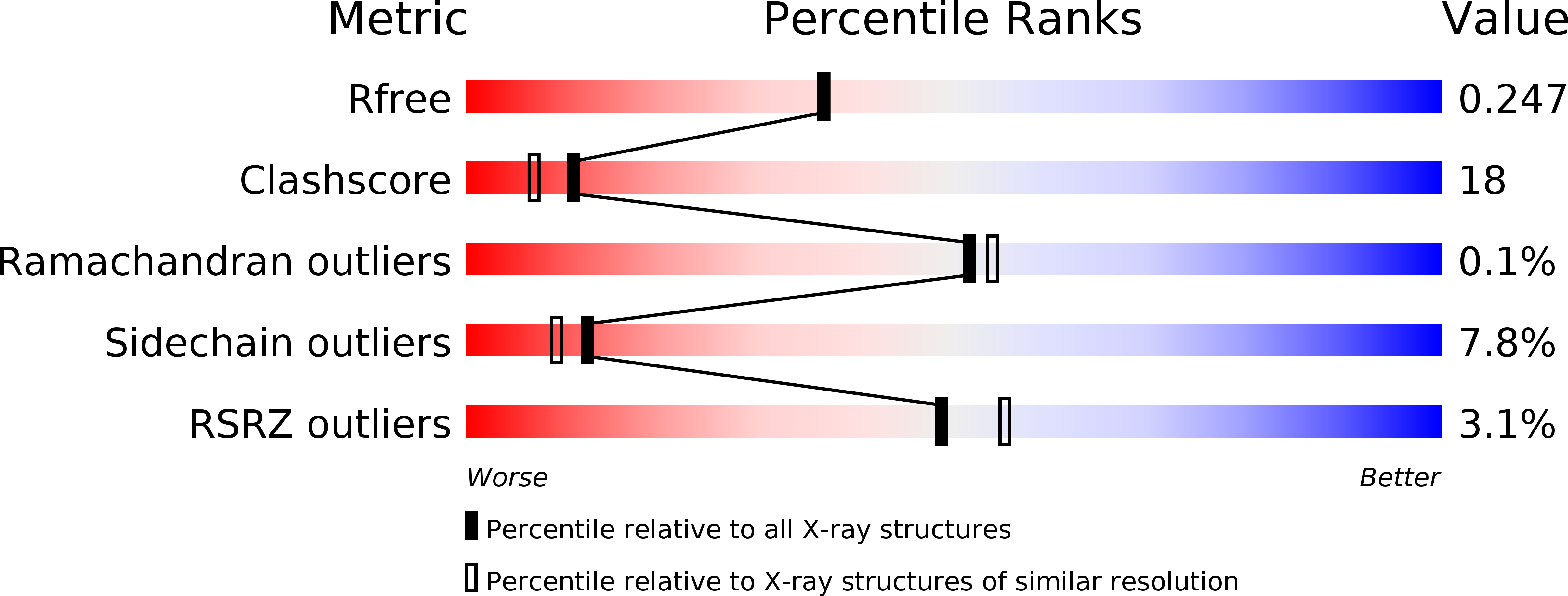
Deposition Date
2019-01-30
Release Date
2019-02-13
Last Version Date
2024-10-16
Entry Detail
PDB ID:
6NTR
Keywords:
Title:
Crystal Structure of Beta-barrel-like Protein of Domain of Unknown Function DUF1849 from Brucella abortus
Biological Source:
Source Organism:
Brucella abortus (Taxon ID: 235)
Host Organism:
Method Details:
Experimental Method:
Resolution:
2.10 Å
R-Value Free:
0.24
R-Value Work:
0.19
R-Value Observed:
0.20
Space Group:
P 1


